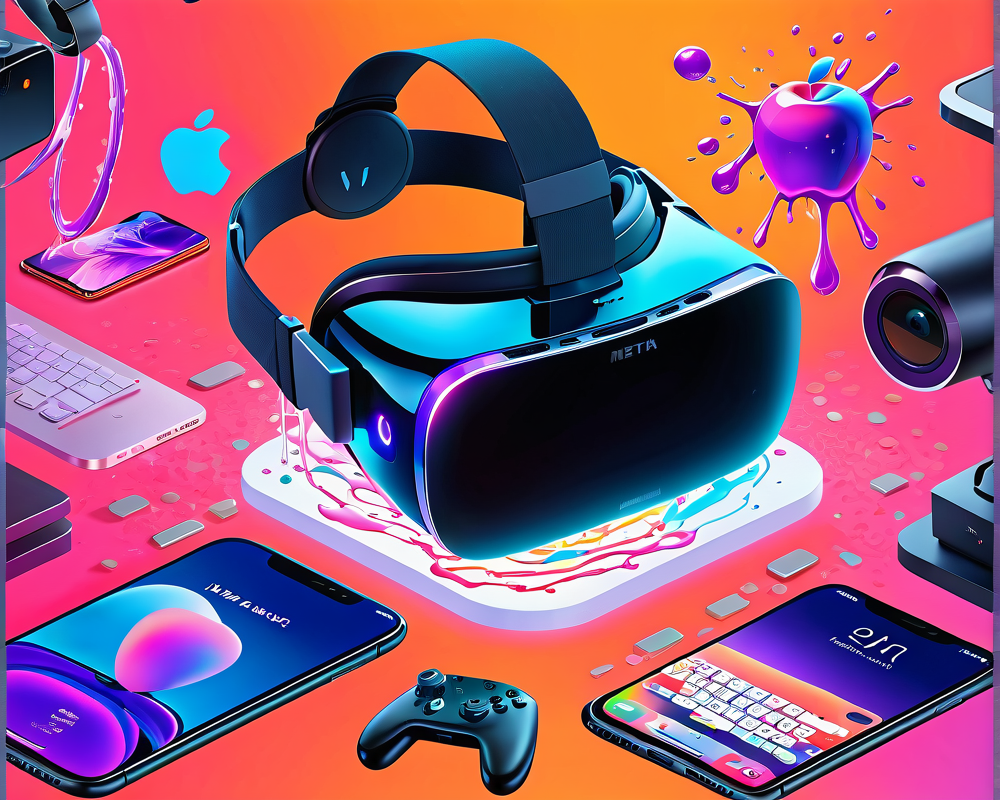Understanding the Metaverse Landscape
The metaverse, an expansive digital universe, garnered significant attention during the bull market peak, particularly from the crypto community and venture capitalists. With tech giants like Meta and Apple entering the fray, the conversation surrounding the metaverse has only intensified. But what does each company’s approach mean for the future of this virtual frontier?
Meta’s Virtual Reality Vision
Meta, formerly known as Facebook, has shifted its focus primarily toward virtual reality (VR). Recently, they launched a collaboration with Ray-Ban, introducing a new line of smart glasses that emphasize immersive experiences. However, are they taking the right approach? Some analysts, including Beniamin Mincu, the CEO of MultiversX, argue this might not be the case.
Apple’s Spatial Computing Strategy
On the other side, we have Apple, which has opted for a more innovative spatial computing methodology. This approach, centered around augmented reality (AR), aims to create an intuitive experience that blends the digital with the real world. In 2023 alone, Apple launched its own AR glasses, indicating a clear commitment to redefining interaction within the metaverse.
Insights from Beniamin Mincu
In a thought-provoking interview with Cointelegraph, Mincu shared his insights on the differing strategies of Meta and Apple. He emphasized that while Meta’s VR glasses are designed for single-use scenarios, Apple’s spatial computing allows for a multifaceted interactive experience. According to him, this difference is crucial:
“Viewing a lens or an interface as a spatial computing device is a very underrated paradigm shift that Apple has introduced.”
What is Spatial Computing?
Spatial computing encompasses processes and tools that enable users to interact with 3D data. Its applications range widely, including the Internet of Things, digital twins, ambient computing, and, notably, augmented and virtual reality. Unlike Meta’s VR fixation, spatial computing emphasizes the interaction between humans and machines:
- Real objects and their digital counterparts
- Enhanced interactivity in shared environments
- Dynamic usage across applications
MultiversX Steps into the Future
In alignment with the evolving landscape of spatial computing, MultiversX is gearing up for technical upgrades. Scheduled for October 19, these enhancements promise to scale the platform and improve its alignment with spatial computing methodologies.
Some standout features include:
- Early block proposals
- Parallel node processing
- Consensus signature checks
- Dynamic gas cost improvements
These upgrades are projected to boost transactional throughput by sevenfold while offering faster confirmations and shorter finality times. Plus, innovations like on-chain governance and an improved transaction model mark a significant leap forward for the platform.
Conclusion: The Metaverse’s Diverging Paths
The metaverse journey continues, with different tech titans forging their unique paths. As Meta delves deeper into virtual reality and Apple champions spatial computing, the question remains: which approach will redefine user experience in the metaverse? Only time will tell, but one thing is certain—this digital realm is just getting started.




